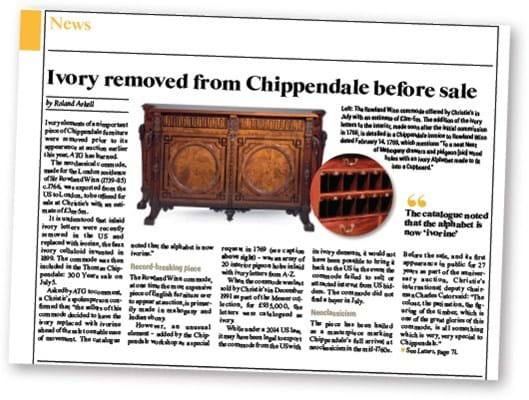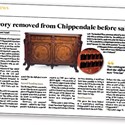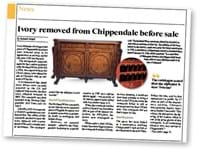What does this act of desecration bode for the future?
But first, in the light of the ivory bill currently passing through parliament, it is important to recognise that the proposed legislation would not necessitate such vandalism.
It was because of restrictions imposed in the United States that the ivory was ill-advisedly removed. American private collectors and museums are, regrettably, the helpless victims of President Obama’s ill-thought out Director’s Order 210 (2014), intended to deter the trade in ivory and ban all imports.
’Timely warning’
And yet, as members of parliament continue to consider the UK’s own bill, perhaps the American example that led to this wanton damage to a great work of art is a timely warning.
The de minimis exemptions proposed would, of course, allow for works of art such as the now-altered commode to pass freely through the market in its original state.
What is of far greater concern is the fate of the many thousands of less stellar, but bona fide works of art made of or containing ivory and owned or acquired in good faith.
It should by now be recognised that the ivory bill will pass into law, and we should continue to applaud its purpose in eradicating poaching of the endangered elephant.
What cannot be accepted is a correlation between the illicit trade and the market for bona fide, pre-1947 works of art: the evidence does not exist.
As discussions continue, it is to be hoped that common sense will be brought to bear on those officials charged with constructing workable and equitable regulations for the bill’s administration.
Parliament must, in its publicly-supported zeal to protect the elephant, also ensure the preservation of our cultural heritage for future generations, irrespective of rarity or value.
Martin P Levy, FSA
H Blairman & Sons, London
















